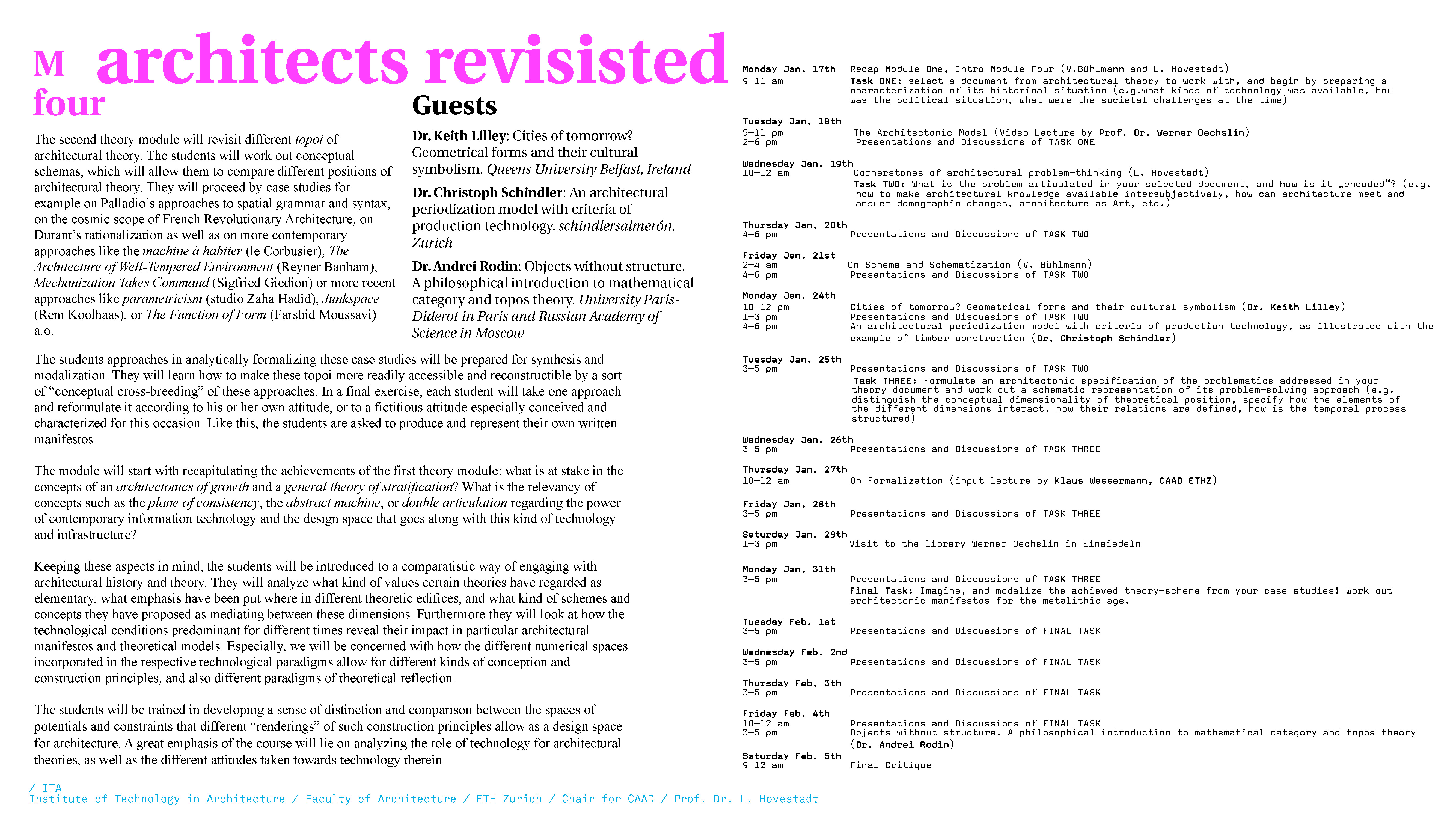M FOUR: ARCHITECTS REVISITED
The students approaches in analytically formalizing these case studies will be prepared for synthesis and modalization. They will learn how to make these topoi more readily accessible and reconstructible by a sort of âconceptual cross-breedingâ of these approaches. In a final exercise, each student will take one approach and reformulate it according to his or her own attitude, or to a fictitious attitude especially conceived and characterized for this occasion. Like this, the students are asked to produce and represent their own written manifestos.
The module will start with recapitulating the achievements of the first theory module: what is at stake in the concepts of an architectonics of growth and a general theory of stratification? What is the relevancy of concepts such as the plane of consistency, the abstract machine, or double articulation regarding the power of contemporary information technology and the design space that goes along with this kind of technology and infrastructure?
Keeping these aspects in mind, the students will be introduced to a comparatistic way of engaging with architectural history and theory. They will analyze what kind of values certain theories have regarded as elementary, what emphasis have been put where in different theoretic edifices, and what kind of schemes and concepts they have proposed as mediating between these dimensions. Furthermore they will look at how the technological conditions predominant for different times reveal their impact in particular architectural manifestos and theoretical models. Especially, we will be concerned with how the different numerical spaces incorporated in the respective technological paradigms allow for different kinds of conception and construction principles, and also different paradigms of theoretical reflection.
The students will be trained in developing a sense of distinction and comparison between the spaces of potentials and constraints that different ârenderingsâ of such construction principles allow as a design space for architecture. A great emphasis of the course will lie on analyzing the role of technology for architectural theories, as well as the different attitudes taken towards technology therein.

